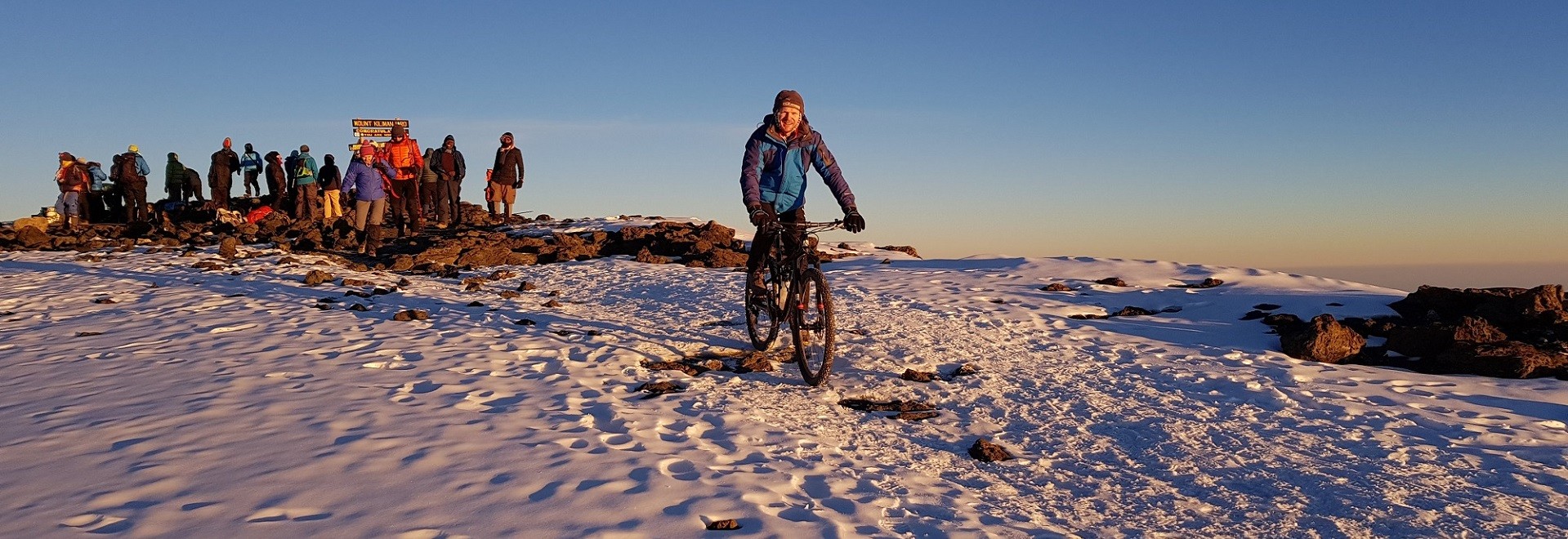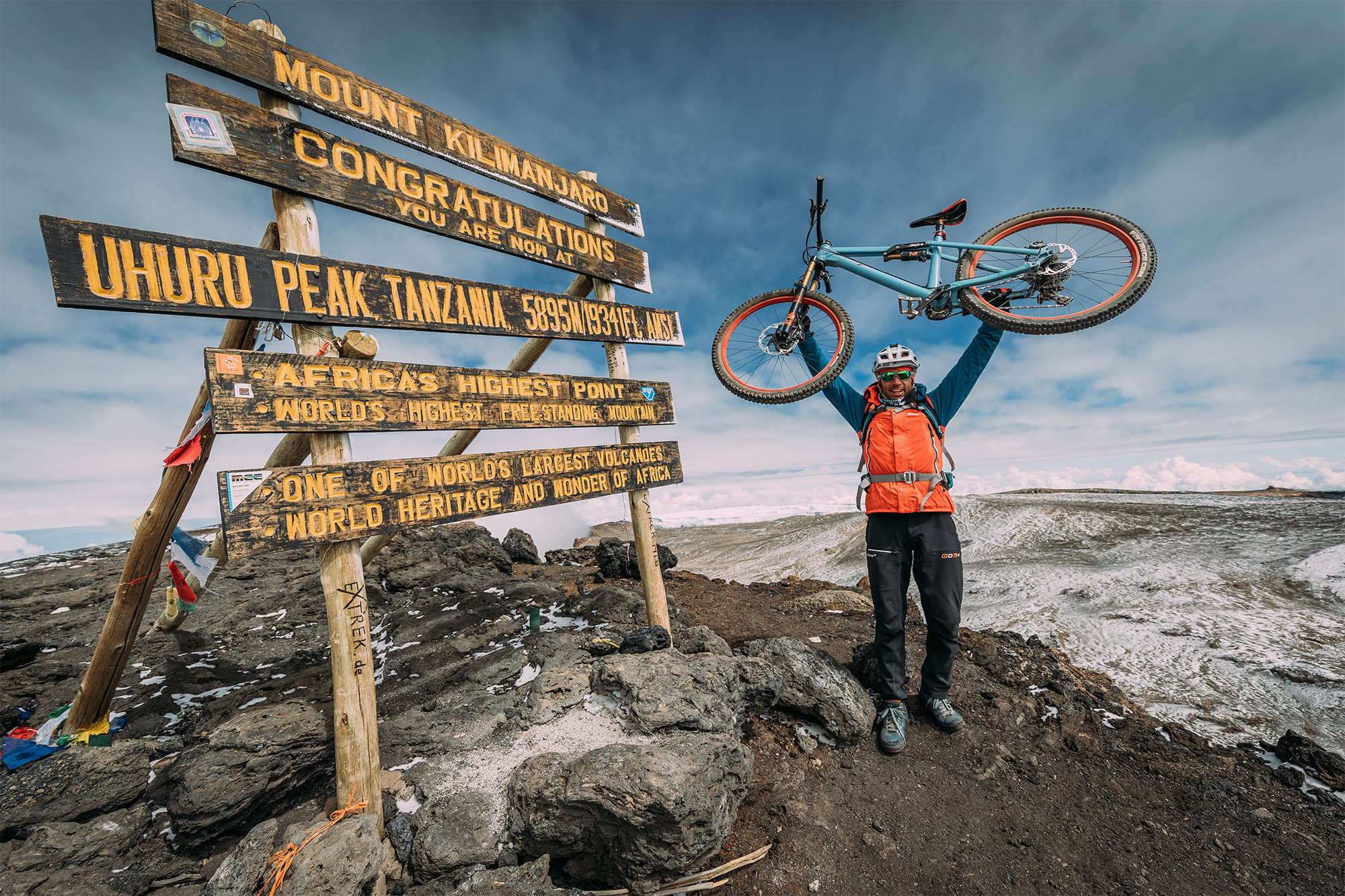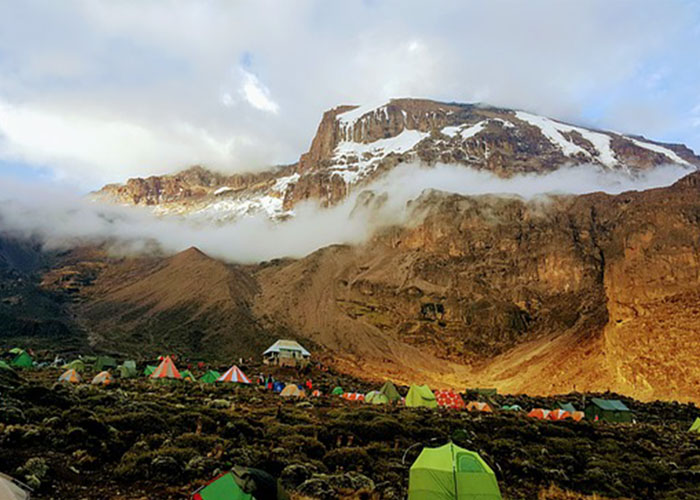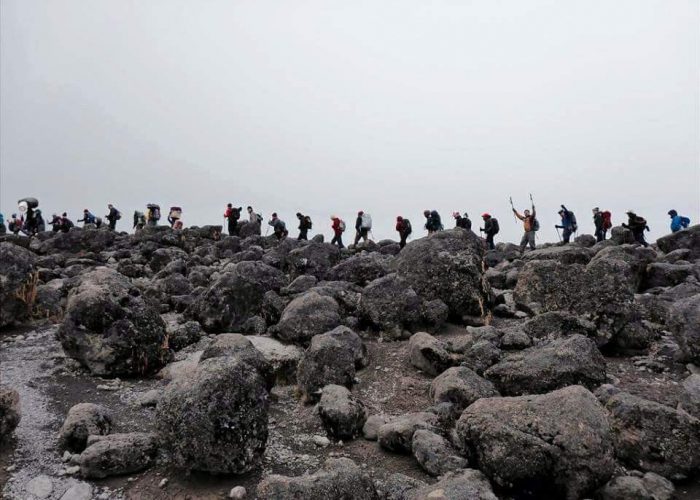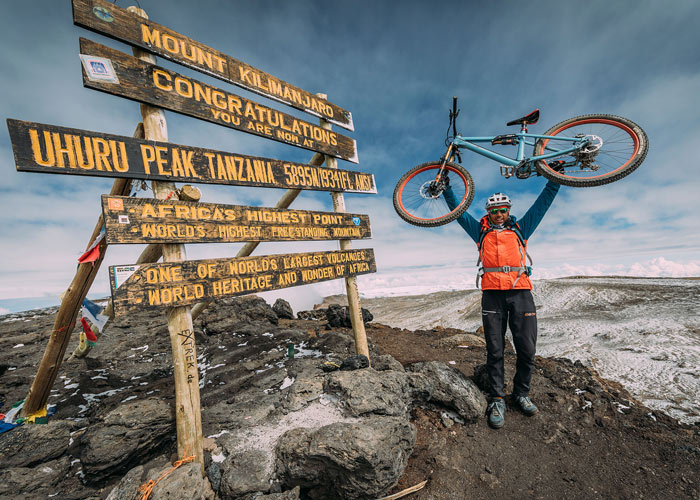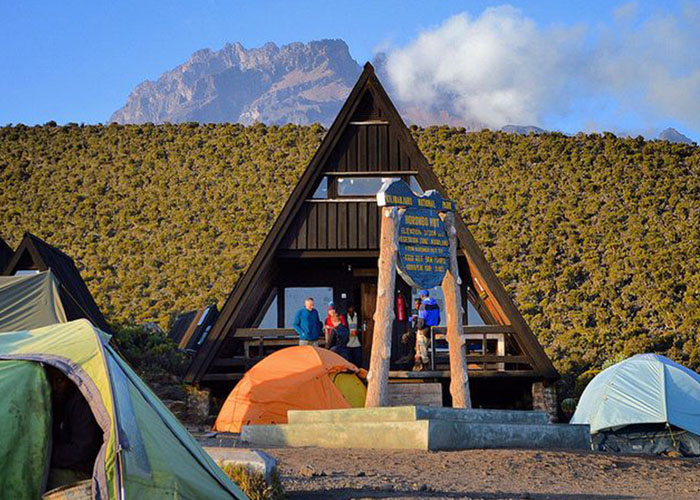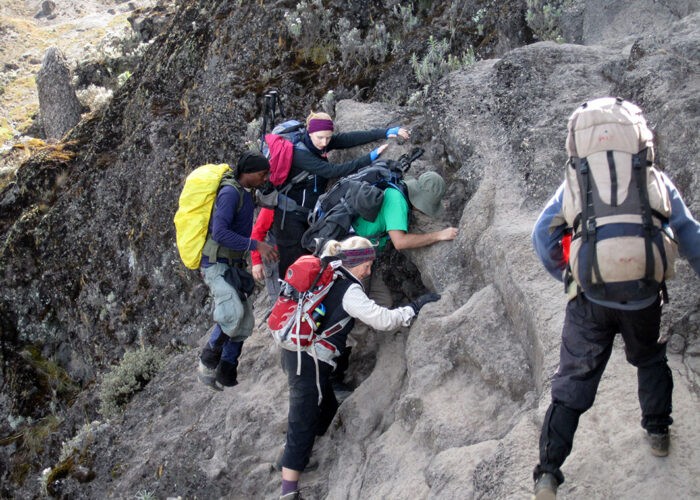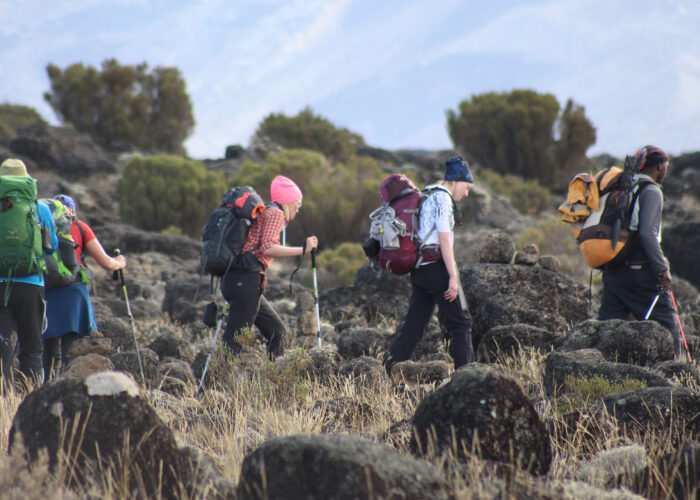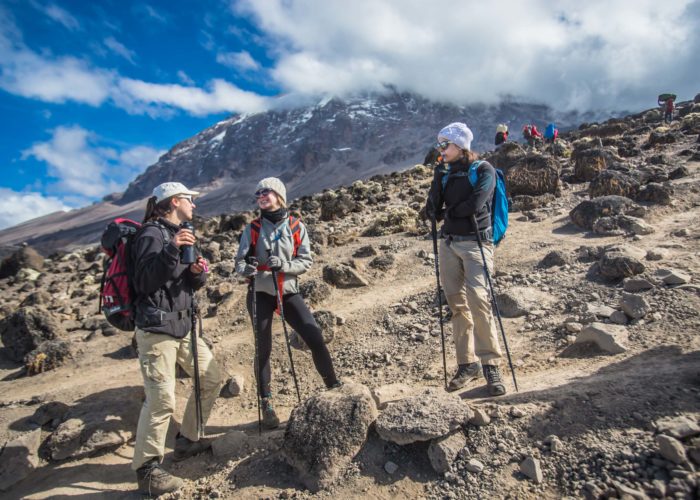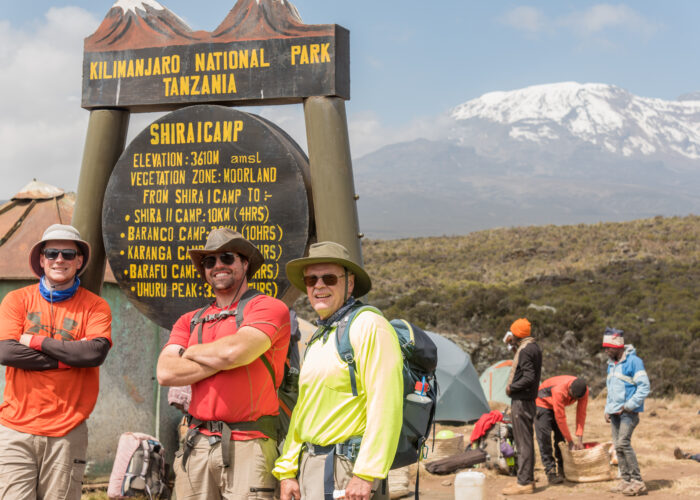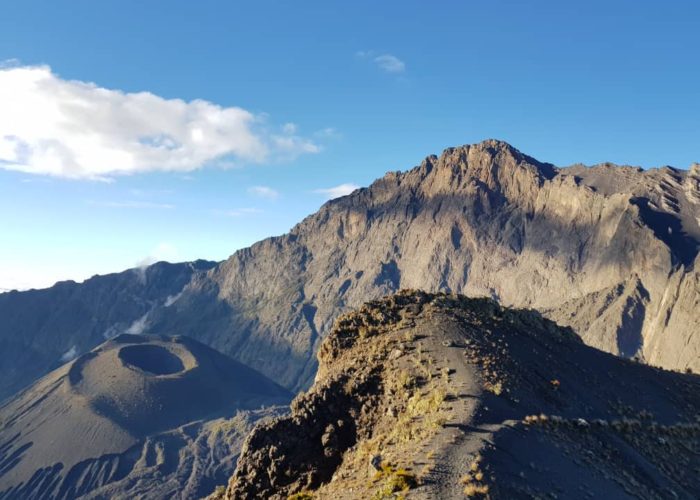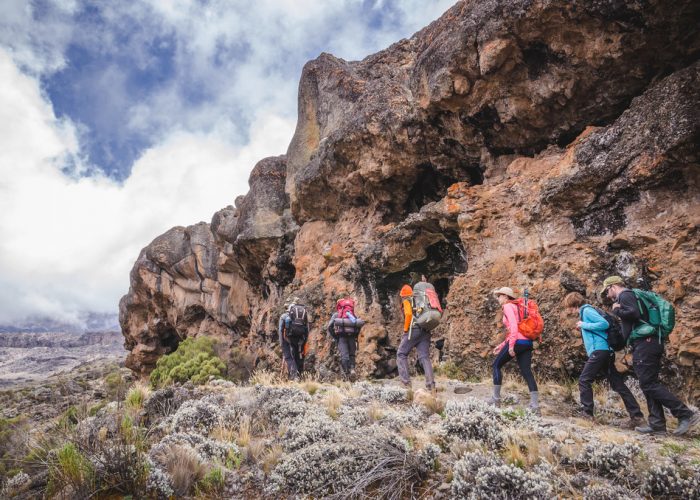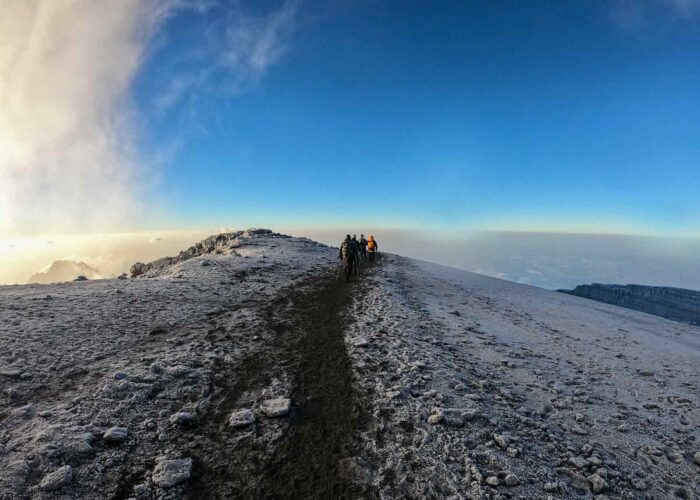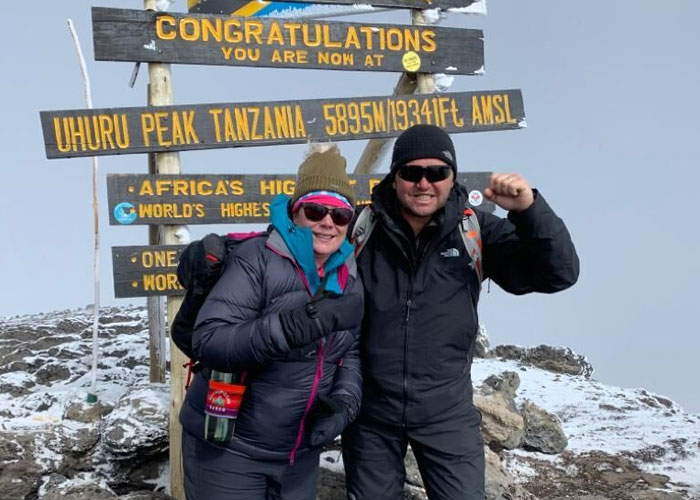The Kilema route is a special route set aside for mountain bike adventures and cycling on Mount Kilimanjaro. Before this route was established, most routes were for walking, hiking, or trekking on foot. Most mountain bikers used the Marangu route to climb to the summit of Mount Kilimanjaro, the Uhuru Peak but it used to be a major inconvenience, mixing up cyclers and climbers on foot. Kilema route measures (19km) long and cyclists usually meet their porters at Horombo before they embark on their bicycle journey to the summit. Cyclists that do not aim to reach the top of the mountain at Uhuru Peak, Kilimanjaro’s summit, begin their mountain bike adventure from Londorossi gate or from Morum Picnic Site then back to Morum enduring a combined a 44km long ride.
Special Kilimanjaro Route for Mount Bike Climbing
The Kilema Route is a new route introduced recently specifically for biking tours or cycling up Mount Kilimanjaro. Just like the other routes on the mountain, it is recommended to add an extra day or extra time for acclimatization to minimize the effects of altitude sickness.
Kilema Route Acclimatization
Tranquil Kilimanjaro offers Kilema Route acclimatization hike from the Marangu gate to Mandara Hut Camp by trekking before embarking on the designated cycling route of Kilema. Acclimatization trek helps to minimize altitude sickness by helping the body to adjust to higher altitudes that are more demanding and challenging.
Cycling on Kilimanjaro via Kilema Route
The typical Kilimanjaro cycling tours via the Kilema Route begins early in the morning at the Marangu gate at around 8:00 am. It is here at the Marangu gate where you go through the registration formalities for entering the park of Kilimanjaro.
After completing the registration process at the gate, you will drive west to Kilema Gate for about one hour where the cycling on Mount Kilimanjaro begins.
You will cycle from Kilema Gate to Kilema Cave for an 8km endurance biking tour rising in altitude as you traverse the rainforest zone of Mount Kilimanjaro edging closer to the moorlands zone of Kilema cave.
Since the Kilema Route is new, it has less traffic, is remote and scenic.
Summiting Kilimanjaro while cycling and biking descent via Kilema Route
Reaching Uhuru peak to summit, you will begin summiting from Horombo to eventually join up with the Marangu route path that leads to the summit.
To go down the Mountain, descent follows the same route towards Horombo then exiting the park through the Kilema Gate.

